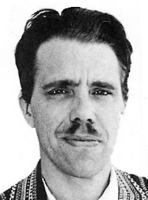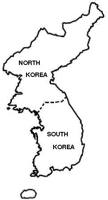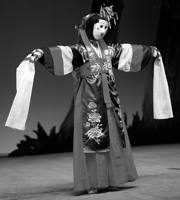
|
The Society of Folk Dance Historians (SFDH)
Folk and Ritual Dance of Korea
[
Home |
About |
Encyclopedia | CLICK AN IMAGE TO ENLARGE |

|
 Considering the deep love that the Korean people have for dance and music, it is fairly safe to assume that these arts existed in some form or other ever since the founding of the ancient land of Cho-sen on that peninsula some 2400 years ago.
Considering the deep love that the Korean people have for dance and music, it is fairly safe to assume that these arts existed in some form or other ever since the founding of the ancient land of Cho-sen on that peninsula some 2400 years ago.
Unfortunately, however, no known written literature or records exist prior to the time of the Yi Dynasty that came to power about 1392, a full century prior to the arrival in America by Columbus. Under the direction of the Yi though, there were two compendia: Akhak kwebom and Siyong Mubo, manuals on musicology and dance, that included items pertaining to dances of every dynasty since the Silla, that was ruling at the start of the Christian Era. In the absence of written record, much of this was obviously gathered through 1) being passed on, generation to generation, through performance and tale, and 2) from details of art, murals, and inscriptions. A good example of the latter is found on the walls of a tomb discovered in 1940 in the province of Koguryo (circa 560 CE), in which a dance quite similar to dances done today is easily recognizable.
Traditional dance in Korea today is divided into three major categories: religious, court, and folk. Modern dance, a relatively new phenomenon, includes ballet, modern social, and of course, at the moment, western and rock. What we call "international folk dance" should also come under this classification. But none of these is Korean, so we can pass them by for now.
Koreans have always had a great deal of respect for their ancestors and their heritage. And over the many centuries during which the land was ravaged by foreign invaders, items and customs of the country were often destroyed. There has been a great effort of recent years, however, to rediscover and preserve the past, and the 1962 Law to Protect Cultural Assets was enacted to do just that. Tangible assets, such as temples, artifacts, treasured objects, art, historical sites, and scenic areas are dimensional, and something solid. The law, however, protects intangible assets (that are something else again) – and this grouping includes certain cultural assets, such as some music, dance, technique, or craft ability, and there are individuals who are the artists, craftsmen, or teachers in these fields who are designated as "human national treasures." Hence, taking the field of folk dance, a traditional dance such as the Maseukeu-ch'um, mask dance, of Pongsan is a protected national treasure, a highly recognized teacher of it could also be a national treasure. The costume for it may also be regarded as a national treasure. Thus, protected by law, they will not be indiscriminately taught and danced by any and all who would.
 Korean religious dances may be roughly divided into three main categories: Confucian, Buddhist, and Shamanist. These were introduced to the land when those respective beliefs became popular. Il-mu, line dance, is a Confucian ritual dance and came to Korea somewhere around 1200 CE. The number of participants is determined by the importance of the occasion. It is danced in sets of lines, dancers in the lines equalling the number of lines, thus (for the most important event) there would be 64 dancers, eight lines of eight dancers each. There also would be groups such as six lines of six dancers, five of five, or even two of two. There is a dance done by two sets of men in rich red robes, one civil officials, one representing the military. They were easy to tell apart – the civilians carried flutes and feathers, the soldiers carried a shield decorated with a fiery green dragon and a hatchet. This dance is performed each year at the Shrine of the Yi Kings, and at the spring and autumn festivals of Songgyunkwan in Seoul.
Korean religious dances may be roughly divided into three main categories: Confucian, Buddhist, and Shamanist. These were introduced to the land when those respective beliefs became popular. Il-mu, line dance, is a Confucian ritual dance and came to Korea somewhere around 1200 CE. The number of participants is determined by the importance of the occasion. It is danced in sets of lines, dancers in the lines equalling the number of lines, thus (for the most important event) there would be 64 dancers, eight lines of eight dancers each. There also would be groups such as six lines of six dancers, five of five, or even two of two. There is a dance done by two sets of men in rich red robes, one civil officials, one representing the military. They were easy to tell apart – the civilians carried flutes and feathers, the soldiers carried a shield decorated with a fiery green dragon and a hatchet. This dance is performed each year at the Shrine of the Yi Kings, and at the spring and autumn festivals of Songgyunkwan in Seoul.
The Buddhist dances originated in India, traveling to Korea by way of China over a period of some 1700 years. While they were once many, only four types still live today. Nabi-ch'um, a butterfly dance, is performed by a dancer in a long yellow or white robe, the full sleeves are the wings, with a red overmantle worn across one shoulder. In Mogu-ch'um, the devil dance, two dancers wearing the same butterfly costume circle around a wooden log that represents the devil and strike at it with decorated mallets. There is a quite strenuous cymbal dance called Para-ch'um in which the dancer carries two very large heavy metal discs, striking them from time to time at the significant parts of the dance. Sung-mu, the priest's dance, is danced by a man wearing a costume of a priest with a hood who whirls around and around and concludes with a "bravura" on a drum on the floor.
Shamanism is a word loosely applied to the religions of the Turanian tribes of Central Siberia, and indicates a person, a shaman, who has the powers of communicating with the spirits, oracles, and gifts of healing. (North American Native Americans gave some strikingly similar comparisons that leads to belief in the truth of the land-bridge across the Bering Straits.) It still exists in some rural areas in Korea. Rituals consist of frenzied movements to the accompaniment of loud music, and with the intent of driving out evil spirits, cure illness, or bring good fortune. Like the Yakuts in Siberia, there are both male and female shaman dances that have borrowed considerably from the Buddhist in music and costume, but it lacks the solemnity, and involves humor, acrobatics, and high spirits. The shaman may wield or juggle numerous objects, such as spears, knives, and so on. In one dance climax, the shaman dances barefooted on the edges of two long swords. What manner of necromancy is utilized here is not explained by the performer, but it is indeed impressive, and the spectators regard it as a miracle. The shaman ritual has been adapted to more recent folk dances, but needless to say, no folk dancer has yet tried to emulate the sword-walking act as part of the choreography.
The second category of Korean traditional dance, the Court dances, may be divided into two groupings: the true traditional Hyang-ak and those dances that are adaptations of imported Chinese dances, usually of very ancient origin, called Tang-ak.
Somewhat in excess of fifty court dances are still known in Korea, although there have been far many more lost with no record. Over the two millenia since the start of the Koguryo period, dynasties have flourished and within the dynasties, many rulers have hald court, and as the various of the three kingdoms held sway, arts, including music and dances, won and lost favor as they were introduced and then displaced by the new overlords. Some have retained their popularity however, and such representative dances could include the Cho'son-ch'um dating back to the period 550 CE of Koguryo; the Kom-mu, sword dance, of the court of Silla (and the Silla collapsed in 935 CE!); the Ki'ak, music dance of Paekche; the Hakmu, the crane dance of a couple of centuries later; and the picturesque Ch'enaeng-jon, the picturesque nightingale dance of the more recent Yi dynasty.
There is an old painted screen, dating from the Yi dynasty, that pictures one of these special court dances. It is possible to reconstruct just about what patterns were made by the dancers, who were in two concentric circles of twenty-two and eleven dancers, a lesser phalanx in the background, and a large orchestra of musicians in the foreground. The members of the court sit around on the three sides. The traditional musical instruments are also readily discernable. In these court dances, the usher steps forward as the curtain rises and tells the story of what the upcoming dance is all about. He is known as the "chuk-an-ja." The dance is done in elegant costumes, generally by women and/or children, in courtly manner. They are called Pop-mu, orthodox dances, and accompanied by constant vocal and instrumental music. They are for entertainment purposes. The Il-mu dances were always a part of solemn ritual.
T'al-ch'um, folk dramas, are the third division of traditional dance. Folk dancing and song are mingled, generally for satirical purposes, and although said to have been derived from religious rituals, they have been greatly altered upon disestablishment. Various of these dance-drama-pantomimes are performed in different regions. Each is distinctive as to its dance-patterns, music, costume, and dialogue commentary. All, however, have the same thread familiar to much folk dance: satire, lampooning, or mimicry of the so-called higher elements of society by the peasants. The list of characters, and of the situations, read almost as one would find in any occidental comedy: the reprobate monk chasing an innocent young girl, the country bumpkin, a shrewish wife, the country squire who may be senile or salacious or both, or the crooked politician. Originally, these dance-dramas were long and repetitious, becoming dull and disinteresting. Recently, however, there has been a trend to edit, culling the best parts into separate scenes condensing into something appreciated by the general public.
Several of these dances have been singled out for special mention in the Handbook of Korea in the long section on the arts. Of importance are the T'al-ch'um, Pongsan mask dance, and Sandae, mask dances of the villages of Yanggju and Songpa. These dances nearly died out around 1921, but government assistance and encouragement has revived interest in them, as well as with Ogwangdae, five clown dance, and several Geom, sword dances, and these have been designated national cultural treasures and as such can be assured of permanence. Sung-mu, Buddhist drum dance mentioned earlier, was adapted as a folk dance sometime in the early 1500's when a famous female entertainer and musician, Hwang Jin-i, performed the dance in order to seduce a monk noted for his austere celibacy, and the priest dancer, in her version, became such a sensual pantomime of seduction that it still is popular in the night club shows in Seoul, updated for the modern tourist trade. An outgrowth of this dance is the Ku-ko-mu, nine-drum dance, that has an additional eight drums (in addition to the goblet-shaped one slung from the dancer's neck) hung on a U-shaped frame. Starting slowly, the dancing and drumming build up in speed and rhythm to a climax of acrobatics. Meanwhile, the performer beats the drums, each pitched to a different note, creating a most intriguing network of sound, this in a back-bend limbo position.
Kang-gang-su-wol-lae, round dance, is said to have dated from the Japanese invasion of southern Korea just before the Sho-gun period. If you will recall, Japan was recovering from a series of reverses in China and Korea that had occurred a decade of so prior to the beginning of the time ascribed to the Sho-gun novel. The Korean coastal villages had no troops in garrisons, but the authorities sent groups of young girls to the beaches to dance around large bonfires that gave the appearance of many soldiers on guard, thus frightening away the approaching boatloads of Japanese invaders. As in other folk dances of the type, the beginning is quite slow, but builds up to a breathtaking finish, and the dancers swirl around the signal-fires singing in a circle, casting gigantic flickering shadows that were terrifying to the Japanese troops.
Nong-ak, the famous farmers' dance, is a rural group dance performed for as long as there is any record. This is probably the closest to what could be a western or European folk dance form. It celebrates the planting and harvesting and other aspects of the agricultural cycle. It is probably the best-known of all Korean dances, folk or otherwise, and has had various modern adaptations and improvements. This is the dance one will usually see pictured in any travel brochures, postcards, or souvenir dolls. The performers, white-clad, wearing brilliant sashes and headdresses, carry drums, gongs, and streamers. Here one will find the goblet drum, an important part of the equipment. The turns and steps are based on a twelve-beat pattern, irregularly divided into groups of three and four beats. In more recent days, one character of the dance, the swirling of the long ribbons that are attached to the top of the hat, has been exaggerated, probably to give the audience a bit extra to exclaim about, and the resulting spectacle of looping whirls and figure-eights can outshine the less vivid but subtler steps and movements.
Sometime in the early 1920s, modern dance came to Korea, brought there by Ishii Baku, a well-known Japanese dancer who had studied under Rossi, the Italian ballet master. During the next two decades, other visiting artists and troupes, primarily ballet, visited Korea, and this was the extent until the end of world War II. Following the Liberation, the dancing masters of Korea began to develop a Korean modern dance style of their (and Korea's) own. Many folk dancers and singers here in the United States and Canada will remember the Little Angels, the delightful group of youngsters who toured this continent in the 1950s and early 1960s. In addition to that group, there are additional dance groups: the National Dance Group, the Korean Folk Dance Ensemble, and the National Ballet Group of Korea. (We are speaking here of South Korea – there is at least one excellent group based in North Korea, too, that goes on tour in the Iron Country and other countries it is reported.) With at least five universities offering dance programs, turning out over 150 graduates each year, and a strong government-supported Dance Arts promotion plan, dance in Korea has a healthy future.
BIBLIOGRAPHY
- Korean Overseas Information Service.
- Handbook of Korea, Seol, Korea.
- Heyman, A.C. Dances of the 3000-league Land, Dong-a Publishers, Seoul, Korea.
- Lee Hye-gu. An Introduction to Korean Music & Dance, Royal Asiatic Society, Seoul, Korea.
- Ms. In Sook Park, Seoul. Korea, Ministry of Culture & Information, Seoul, Korea.
- National Geographic, April 1900, October 1933, December 1908, July 1919, National Geographic Society, Washington, D.C.
DOCUMENTS
Printed in Folk Dance Scene, April 1981.
This page © 2018 by Ron Houston.
Please do not copy any part of this page without including this copyright notice.
Please do not copy small portions out of context.
Please do not copy large portions without permission from Ron Houston.